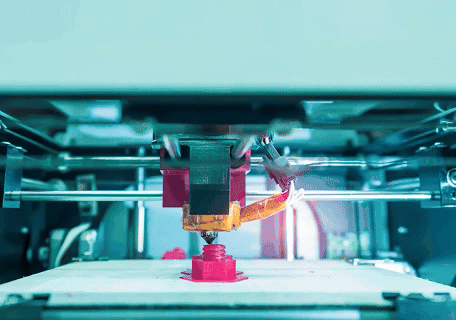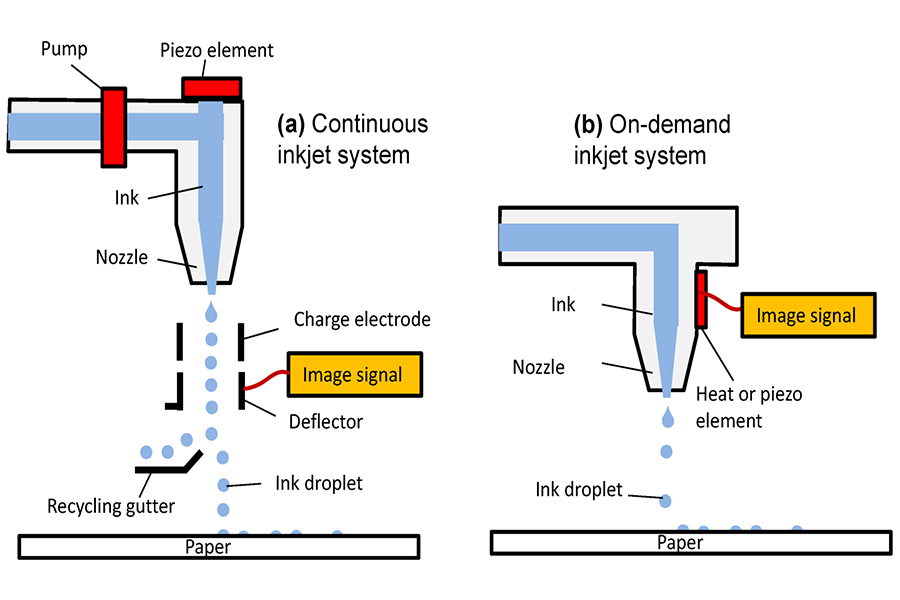الطباعة ثلاثية الأبعاد هي تقنية تصنيع متقدمة تحول النماذج الرقمية إلى كائنات صلبة عن طريق وضعها على قمة بعضها البعض ، والمعروفة أيضًا بالتصنيع المضاف. 3 d تقوم الطباعة بإنشاء كيانات ثلاثية الأبعاد مباشرة من نماذج تصميم CAD أو تصاميم الكمبيوتر مثل بيانات المسح 3D ، وتخفيض درجات الإنتاج بشكل كبير وتقليل تكاليف التطوير. تشمل تقنياتها الأساسية البلمرة الضوئية (SLA) ، ونمذجة ترسب المنصهر (FDM) وتلبيث الليزر الانتقائي (SLS). مرن للمواد البلاستيكية والمعادن والسيراميك وحتى المواد الحيوية ، ويستخدم على نطاق واسع في النماذج الصناعية والنماذج الطبية ومكونات الفضاء والسلع الاستهلاكية الشخصية.
شاركت شركة JS بعمق في خدمات الطباعة ثلاثية الأبعاد لسنوات عديدة ، حيث توفر حلولًا واحدة للعملاء. سواء كان ذلك هو الطلب على طباعة النماذج ثلاثية الأبعاد الدقيقة أو تصنيع المكونات الوظيفية الهيكلية المعقدة ، يمكن لشركة JS تحقيق جودة عالية وتخصيص فعال.
 ما هي الطباعة ثلاثية الأبعاد؟
ما هي الطباعة ثلاثية الأبعاد؟
يتم استخدام النماذج المطبوعة ثلاثية الأبعاد لطباعة عظام المرضى أو مفاصل سبيكة التيتانيوم للتكيف الدقيق. دفعات صغيرة من المكونات ، مثل
كيفية اختيار مواد الطباعة ثلاثية الأبعاد؟
الجمع بين سيناريوهات التطبيق الصناعي الشائع والخصائص الفنية ، يتم تقديم التوصيات التالية لاختيار مواد الطباعة ثلاثية الأبعاد:
الاختيار 1. المماهي حسب نوع التكنولوجيا
| النوع الفني | بشكل شائع الاستخدام | الميزات | سيناريوهات التطبيق النموذجية |
| pla ، abs ، petg ، nylon | النماذج الأولية السريعة ، مكونات الميزات الأساسية. | ||
| resin حساس (hard/fancible) | Precision Parts ، الطرز الطبية . | ||
| nylon (pa12/pa6) ، tpu | مقاومة درجات الحرارة العالية ، قوة عالية ، لا دعم. | المكونات الوظيفية ، البناء الخفيف الوزن. | |
| الطباعة المعدنية | Stainless Steel ، alloy titanium ، aluminium alloy | قوة عالية ، مقاومة للتآكل ، موصلة وتوصيل الحرارة. | Aerospace و قوالب السيارات . |
2. choose وفقًا لخصائص المادة
| نوع المادة | نقاط القوة الأساسية | التدابير الوقائية |
| pla | مقاومة درجة الحرارة الضعيفة (<60 درجة مئوية). | |
| ABS | مقاومة للصدمات ، صفيحة. | أثناء عملية الطباعة ، هناك رائحة ويجب تسخين المنصة. |
| nylon (pa) | moisture امتصاص ، تخزين مقاوم للرطوبة مطلوب. | |
| tpu | مرونة جيدة ، ليس من السهل المسيل للدموع. | يحتاج الطباعة إلى إبطاء. |
| راتنج حساس | متوفر في خيارات عالية الدقة/شبه شفافة. | uV-probling عند تخزينه. |
| مسحوق معدني | يمكن تصنيعها بقوة عالية وبنية معقدة. |
3. محددات التحديد المفتوحة
الخصائص الميكانيكية
- متطلبات القوة: النايلون والمعادن المفضلة.
- مقاومة درجة الحرارة: ABS (80-100 درجة مئوية) مقابل PA (120 درجة مئوية+).
التحكم في التكلفة
- التحقق السريع: PLA/FDM موصى به.
- Precision Production: اختياري راتنجات الحساسية أو sls nylon .
متطلبات ما بعد المعالجة
- no paint: metal/ceramic.
- تخصيص اللون: خيوط ABS/PLA متعددة الألوان.
 ما هي الاختلافات بين أنواع مختلفة من تقنيات الطباعة ثلاثية الأبعاد؟
ما هي الاختلافات بين أنواع مختلفة من تقنيات الطباعة ثلاثية الأبعاد؟
إليك مقارنة بين الاختلافات الأساسية بين الأساسي الثلاثة تقنيات الطباعة ثلاثية الأبعاد :
1. مقارنة الإجراءات الأساسية
| النوع الفني | تشكيل مبدأ | نوع المواد | التحكم في الدقة | جودة السطح |
| fdm | تم بثق مادة الحرير الساخنة. | thermoplastics (pla/abs). | يعتمد على دقة الفوهة (± 0.1-0.5 مم). | corarse (يتطلب التلميع). |
| sla | UV Laser Liquid Resinains Elugy. | الدقة العالية (± 0.05 مم). | smooth ( بالقرب من صب الحقن ). | |
| sls | الهندسة البلاستيكية/المعادن. | دقة معتدلة (± 0.1-0.3 مم). | بنية مسامية ( المطلوبة ). |
2. مقارنة المزايا الفنية والعيوب
| fdm | sla | sls | |
| ميزة | منخفضة التكلفة ، مجموعة واسعة من المواد ، حجم الطباعة الكبير . | DERICHERSE ، أداءً عالي التفاصيل. | قوة عالية ، لا توجد هيكل دعم مطلوب. |
| jarvatter | surface shourness ودقة محدودة. | راتنجات هشة ومعقدة. | معدات باهظة الثمن ومعالجة مسحوق مزعجة. |
 ما هي مبادئ التصميم الأساسية التي يحتاجها نموذج الطباعة ثلاثي الأبعاد إلى متابعتها؟
ما هي مبادئ التصميم الأساسية التي يحتاجها نموذج الطباعة ثلاثي الأبعاد إلى متابعتها؟
SPAN style = "font-family:" arial Black '،' Avant Garde '؛ data-translateid = "7CECDBD58167A928C75F62D0A791A10C" Data-Pos = "0" Data-Len = "3" Data-V-7B79C893 = ""> span style = "font-family: 'arial Black' ، 'Avant Garde' ؛ data-translateid = "361f436763d5bac8447baf17daa0d8f9" data-pos = "0" data-len = "3" data-v-7b79c893 = "" "sendence-v-7b79c893 =" "5. data-translateid = "43675223c64e0d9257097f5ec2a4d77c" data-pos = "3" data-len = "25" data-V-7B79C893 = ""
3.Post processing efficiency improvement plan As an important branch of 3D printing, Ink jet printing has become a key technology in complex structure manufacturing, personalized customization and high performance parts production through precise control of micro-nozzles and multi-material compatibility. Its importance is reflected in the following: 1.High precision and meticulous performance 2.Integration of multiple materials and colors 3.Efficient production and rapid iteration 4.Physical diversity and innovation 5.Technical constraints and improvement directions Technology Strength Assessment 1.Advanced equipment 2.Material adaptability Service Capability Verification 1.Design support 3.Post processing support Quality control system 1.Accuracy verification 2.Reliability testing Cost transparency 1.Quotation details 2.economies of scale Priority should be given to service providers with more than 100,000 hours of printing per year (JS has a large-scale production line that reduces marginal costs). Cases and reputations 1.Industry case studies 2.Client reviews Viewing user feedback through industry forums or third-party platforms such as G2 focuses on on-time product delivery and aftermarket response (JS official website shows 98%% customer satisfaction). 1.Industrial-grade precision manufacturing: Equipped with SLA light curing equipment (±0.02mm accuracy), industrial FDM (±0.05mm), SLS nylon printing supports 100% density to 20% crystal lattice free adjustment with 40% weight loss and constant strength. 2.Comprehensive material compatibility: Includes engineering plastics (ABS/PLA), metals (titanium alloys), ceramics, biodegradable materials and conductive silver ink, supporting parameterized material selection (e.g. PEEK resistance to temperatures below 300°C). 3.Cost optimization and small batch customization: By combining 3D printing and injection molding processes, large-scale production costs can be reduced to 60% of traditional methods, especially for small orders of 100-1000 pieces. Water-soluble auxiliary materials can reduce reprocessing costs by 70% and delivery cycles by 30%. 4.Full Chain Digital Services: From CAD modeling to finished product inspection, 18 node data loops ensure 100% restoration of design intent. 5.Global Service Network: We provide 3D printing services to a number of countries worldwide. For small orders (≤100 pieces), delivery can be made as soon as 48 hours. For medical emergencies, we promise 24-hour fast delivery. The bilingual engineering team provides remote assistance such as model restoration and parameter optimization. 3D printing, at the heart of additive manufacturing, is reshaping global manufacturing landscape. It overcomes the limitation of traditional subtractive manufacturing processes, and enables numerous fields with its advantages of high precision, flexibility and low cost. From biocompatible implants to lightweight aerospace components, from personalized consumer electronics to complex industrial prototypes, 3D printing not only accelerates product iteration, but also facilitates frontier expansion in innovative design and functionality. In the future, 3D printing will continue to drive industrial upgrading as smart manufacturing and green manufacturing are deeply مدمج. JS helps enterprises achieve personalized, efficient, low-carbon manufacturing and redefine global industry chain values through multi-material collaborative printing and hybrid manufacturing. The content of this page is for informational purposes only.JS SeriesNo representations or warranties of any kind, express or implied, are made as to the accuracy, completeness or validity of the information. It should not be inferred that the performance parameters, geometric tolerances, specific design features,material quality and type or workmanship that the third-party supplier or manufacturer will provide through the jusheng network. This is the responsibility of the buyerAsk for a quote for partsto determine the specific requirements for these parts.please Contact us Learn more information. JS is an industry-leading companyFocus on custom manufacturing solutions. With over 20 years of experience serving more than 5,000 customers,we focus on high precisionCNC machining,Sheet metal fabrication,3D printing,Injection molding,metal stamping,and other one-stop manufacturing services. 1.How can 3D printing reduce material waste? Traditional manufacturing often requires cutting and engraving, with a waste rate of 30% -50%. 3D printing is additive manufacturing, which involves printing only the parts needed, with a material utilization rate of over 90%. It is particularly suitable for small or complex production. 2.What is the best FDM printing layer thickness setting? The prototype is rough, with layers of 200-300 microns (0.2-0.3 mm) thick, fast but rough on the surface. The model is excellent, with layers 50-100 microns (0.05-0.1 mm) thick, better detail and longer processing time. 3.Are SLS-printed powder materials reusable? SLS-printed powder material can be reused, but after repeated use, its flowability decreases and their strength decreases slightly. The recovery rate of metal powder can be over 90%, and the number of uses needs to be controlled according to the material type to ensure performance. 4.Is 3D printing expensive? Small plastic printers for home use range from $280 to $1,400, and are suitable for DIY and small batch production. Mass production relies on industrial-grade metal/high-performance printers, requiring tens of thousands to millions.
كيفية تحقيق التوازن بين الكفاءة والدقة بين سمك الطبقة وسرعة الطباعة؟
What is the importance of ink jet printing in 3D printing?

How to evaluate the professionalism of a 3D printing shop?
Five reasons to choose JS company's 3D printing services
Summary
Disclaimer
JS Team
Our factory is equipped with more than 100 state-of-the-art 5-axis machining centers and is ISO 9001:2015 certified. We provide fast, efficient and high-quality manufacturing solutions to customers in more than 150 countries around the world. Whether it's low-volume production or mass customization, we can meet your needs with the fastest delivery within 24 hours. chooseJS TechnologyIt means choosing efficiency, quality and professionalism.
To learn more, please visit our website:jsrpm.comFAQs
Resources






